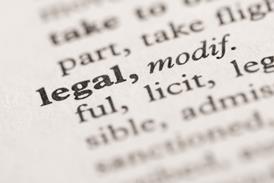The Civil Procedure Rules now require witness statements to be, where practicable, in the witness’ own words and to be written in the first person. It also must be clear what evidence is based on the witness’ own knowledge and what comes from information or belief derived from another source. The witness should now identify relevant documents but not comment on them.
Further, every witness must conclude their statement by signing to say:
“I believe that the facts stated in this witness statement are true.” A witness risks contempt proceedings if he or she makes a statement without “an honest belief in its truth”. Every person involved in a construction dispute should make sure that what they are signing is correct and within their knowledge.
These rules are more than a simple stylistic choice, as was illustrated by Alex Lawrie Factors vs Morgan (CA), which was reported in The Times on 18 August 1999. In this case, the defendant was defending a claim under a deed of indemnity on the basis that she had been induced to sign the deed by her former husband’s fraudulent actions and misrepresentations.
- The new rules require statements to be written in the first person
- Witnesses should refuse to sign statements that do not truly reflect what they can say in evidence.
An affidavit was prepared for her that said she had had “the opportunity of studying the decision of the House of Lords in Barclays Bank vs O’Brien in some detail”. Her affidavit continued for many pages, essentially making submissions as to why Barclays Bank vs O’Brien supported her position in the litigation.
This approach turned sour for her in quite an unexpected way. The first trial judge felt that there was an inconsistency between her defence that she did not know the terms of the deed of indemnity and the articulate and intelligent manner in which she argued her case in the affidavit. He concluded that she could not have been misled by her former husband’s actions and therefore concluded that the deed of indemnity was valid and gave judgment for the claimant.
On appeal, it became necessary to show that the articulate reasoning within her affidavit was her lawyer’s work, not her own. She had to swear a further affidavit explaining that the original affidavit was prepared by her lawyer and that the contents were not her own. Accordingly, she did not actually possess the skill and intelligence that the trial judge had ascribed to her when making his decision. The court was persuaded to grant leave to appeal, but in so doing heavily criticised the approach adopted by the defendant and her advisers in the original action. The Court of Appeal stated that the purpose of affidavits and witness statements was for the witness to state, in his or her own words, what the relevant evidence was. They were not to be used as a vehicle for complex legal argument.
Postscript
James Bessey is an associate lawyer specialising in construction dispute resolution at edge ellison in London.























